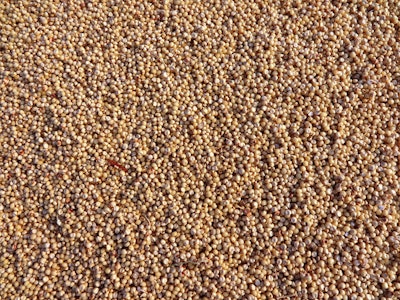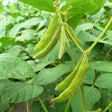
The U.S. Grains Council (USGC) has published its2020/2021 Sorghum Quality Reportand for the second year in a row, U.S. sorghum was, on average, graded above necessary requirements for U.S. No. 1.
Protein content in sorghum was up eight percent year over year, with readings coming in at 11.2 percent, almost a full percentage point jump above last year’s content.
“Protein content in sorghum is really what can set it apart from other coarse grains,” said Reece Cannady, USGC manager of global trade. “When evaluating sorghum in animal diets, it’s important to consider the value of this protein, particularly when every percentage point of protein is so precious with rapidly rising costs.”
The report, funded through the U.S. Department of Agriculture’s Foreign Agricultural Service (USDA’s FAS) Agricultural Trade Promotion (ATP) program, provides international customers and other interested parties accurate, unbiased information about the 2020 U.S. sorghum crop.
To generate the report’s findings, a total of 108 samples were collected from 13 participating elevators located in Texas, Kansas, Nebraska and South Dakota between Sept. 30, 2020 and Feb. 23, 2021 and were analyzed by the Amarillo Grain Exchange and the Cereal Quality Lab at Texas A&M University. Scientists there calculated averages and standard deviations for each quality factor tested and reported results for the U.S. aggregate.
Total sorghum damage came in at just 0.0 percent in the aggregate, and broken kernel and foreign material (BNFM) was only 1.6 percent, both similar to last year’s results, highlighting how hard the grain is and how well it holds up during handling and storage.
For the second year in a row, 100 percent of the samples tested undetectable for tannins.
“A common misconception is that if sorghum is red, it has tannins in it, since that is the case in other major sorghum producing regions like Argentina, Africa and Australia,” Cannady said. “But, in the U.S., we grow a non-tannin red variety. Nutrient absorption can be problematic with high-tannin varieties, essentially depleting the value of the grain, so using a low-tannin, U.S.-grown seed yields great results in animal diets.”
This report is the second in a row completed since the 2016/2017 sorghum crop. USGC plans to roll out the information through webinar distribution around the world to all sorghum consumers and it will be a part of the Chinese corn export cargo report rollout in the near future.
“This report is helping fulfill USGC’s mission to provide the latest information for end-users around the world interested in understanding how U.S. sorghum differs from other varieties,” Cannady said. “We hope the2020/2021 Sorghum Quality Reportprovides valuable information about the quality of U.S. sorghum and shows our valued trade partners that the United States is a trusted supplier.”





















